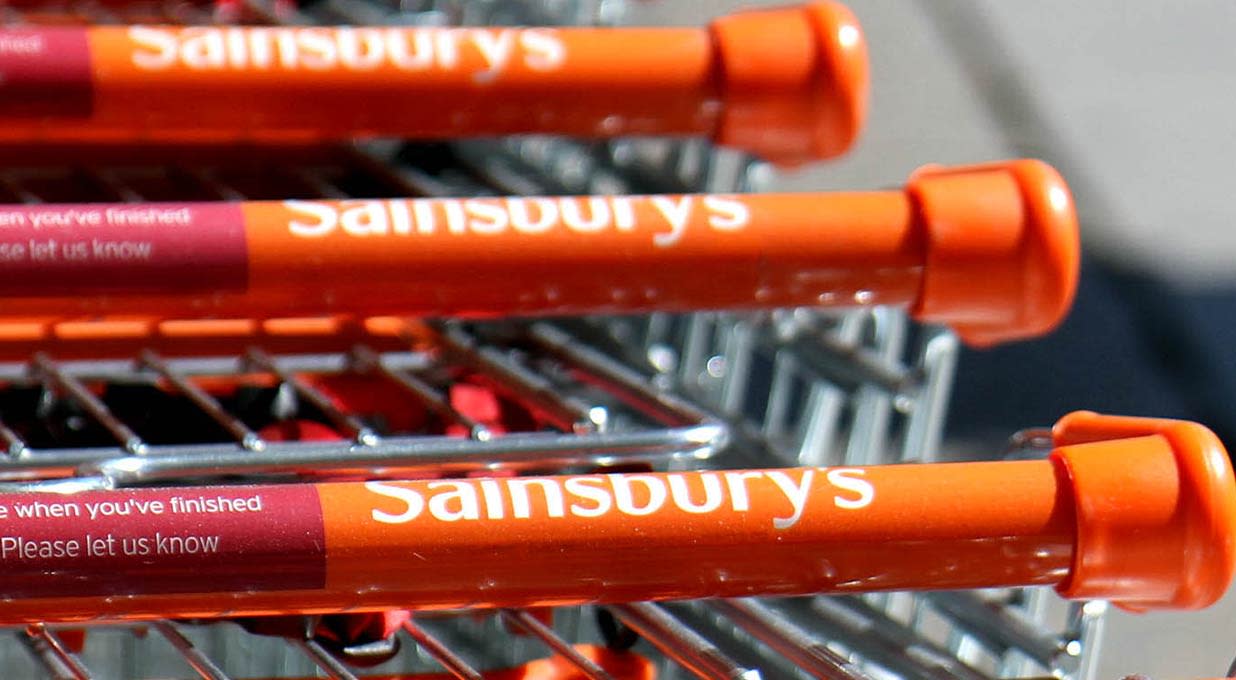First quarter like-for-like (LFL) sales, excluding fuel, rose 2.7% which was lower than the 9.8% growth seen at the same time last year. The group highlighted that volumes have continued to rise, helping to offset the effect of slowing inflation. On a total sales basis, grocery sales were up 4.8%, which was partially offset by declines in general merchandise and clothing, and Argos. The latter is being affected by reduced consumer electronics demand.
The group reiterated that at least £250mn will be returned to shareholders, once the sale of some of Sainsbury’s Bank assets to NatWest has completed.
The group continues to expect retail underlying operating profit between £1.0bn and £1.1bn and to generate at least £500mn of retail free cash flow this year.
The shares fell 1.4% following the announcement.
Our view
Sainsbury’s first quarter results were robust enough. We’re especially relieved to see volumes in the grocery business moving in the right direction. As inflation cools, this helps prop up revenue and profits. The rate of growth has slowed compared to last year, but this isn’t unexpected so shouldn’t be dwelled on too much.
We’re supportive of Sainsbury’s progress. The supermarket continues to achieve market share gains, thanks in large part to a herculean effort to improve products, value perception and innovation more generally.
Grocers have been forced to up their game as competition in the industry reaches fever pitch thanks to the upwards march of Aldi and Lidl. And while Sainsbury's value-led strategy has paid off, offering value doesn't come cheap. Profits aren't shooting the lights out. Those in the middle of the market, like Sainsbury's, are most exposed in these tough times. It means the group has no choice but to get its hands dirty and fight for customers. But credit where it’s due – things like Nectar prices and Aldi price matches are working at plugging the exit of customers.
That’s important because for all Sainsbury’s excellent work in its core business, it is more exposed to general merchandise thanks to its ownership of Argos. Consumer electronics aren’t faring well in this economic climate, as people prioritise the essentials. General merchandise is the most cyclical area of the supermarket economy to be in, so being overweight in this arena really slows you down when times get tough.
We're optimistic that the worst of this is unwinding, but mapping this trajectory perfectly is very difficult. The cost saving programme is helping to combat rising costs and progress has been good, and efforts have been refreshed.
The balance sheet is in better condition, with the group hitting its four-year £950mn net debt reduction target a year ahead of schedule. Along with the £600mn+ of retail free cash flow last year, there's some significant weight behind the healthy prospective dividend yield. Shareholder returns are also being given (at least) a £250mn boost, following the decision to sell core Sainsbury’s Bank assets to NatWest, too. Remember, no dividend is guaranteed, and there are changes coming this year.
In terms of what the sale to NatWest means for the wider business, the impact should be low. We’re supportive of the plan to keep hold of the more nimble and profitable areas of banking, like ATMs and travel money.
Overall, Sainsbury’s has done just about all it can to better itself and it should be commended for that, but the Argos albatross around its neck can’t be ignored. That contributes to a price to earnings ratio that is relatively undemanding.
Environmental, social and governance (ESG) risk
According to Sustainalytics, Sainsbury’s management of ESG risks is strong. An area of strength is the fact that the group’s executive pay is explicitly linked to ESG performance targets. However, within that, the group’s ESG disclosures aren’t in accordance with leading reporting standards, in particular the environmental policy is weak. This is significant given the group’s extensive packaging and freight usage. The group’s large scale puts it at increased risk of scrutiny when it comes to product reputation, and is something to monitor as customer appetites lean more towards sustainable options.
Sainsbury key facts
All ratios are sourced from Refinitiv, based on previous day’s closing values. Please remember yields are variable and not a reliable indicator of future income. Keep in mind key figures shouldn’t be looked at on their own – it’s important to understand the big picture.
This article is not advice or a recommendation to buy, sell or hold any investment.No view is given on the present or future value or price of any investment, and investors should form their own view on any proposed investment.This article has not been prepared in accordance with legal requirements designed to promote the independence of investment research and is considered a marketing communication.Non - independent research is not subject to FCA rules prohibiting dealing ahead of research, however HL has put controls in place(including dealing restrictions, physical and information barriers) to manage potential conflicts of interest presented by such dealing.Please see our full non - independent research disclosure for more information.


